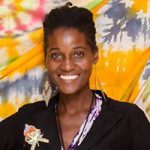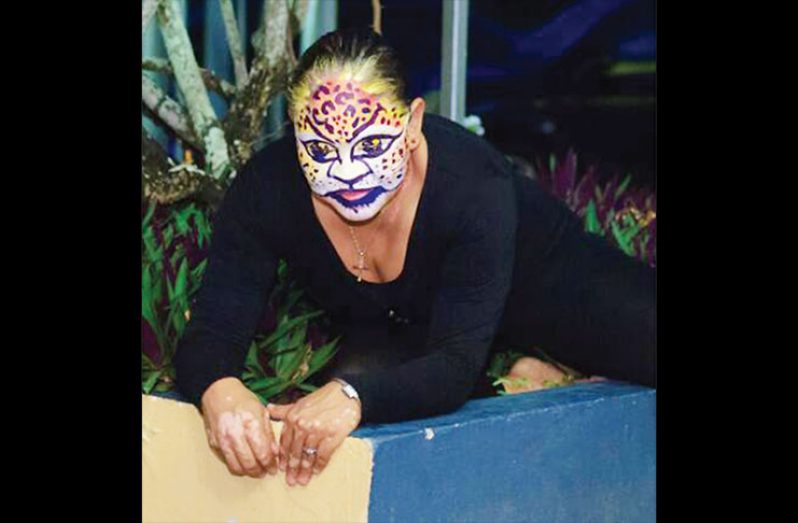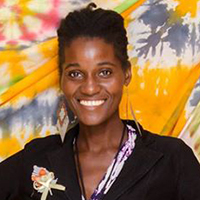THE secrets of Guyanese oral traditions which were once hidden in the backyards of countryside homes are now being revealed to a wider public as students of the ‘Oral Literature’ class of the University of Guyana (UG) strive to preserve the unique literary art.
Through a combination of drama and PowerPoint presentations, the final year English majors staged an informative and entertaining showcase in the Education Lecture Theatre (ELT)recently at the Turkeyen Campus.
While the skies darkened between the hours of 17:00hrs and 20:00hrs, tales of Ole’ Higue, Bacoo, Fairmaid (also called Mermaid or Watta Mumma), Kanaima (an indigenous tradition) and Dutch Man legends were told to an attentive crowd on the inside of an illuminated theatre. Snacks remained untouched for a while as those who related stories, with dramatic injections, gripped the interest of the audience of mostly academics and professionals in the Language field.

the Cyril Potter College of Education/University of Guyana Teachers training program pay attention to the lecture on
oral literature
Other stories of Queh Queh and the Maticore were also told.
Al Creighton, a Caribbean cultural specialist who lectures the final year course ‘Oral Literature’, disclosed to Pepperpot Magazine in an interview that one of the objectives of the Oral Literature course at UG is to preserve the fading and undocumented literary art form.
Creighton defines Oral Literature as “literature that is not written… but things that people speak and things that people perform. They believe in these things and they exist. People were definitely saying that these things are true and these things do happen.”
The Cultural Specialist said Guyana’s oral Literature is not written in books, but is “produced by the people and … they can produce very often in literal forms.”

“Some of them are fading away (but) if you don’t capture them now they would be totally gone. They will continue to exist if people continue to pass them on; if people continue to tell them. People nowadays don’t have time for those kinds of things. They have time or cellphones, computers, TV. Many of the people who practice them are ashamed and are hiding,” he said.
However, Creighton said the ‘Oral Literature’ course at UG attempts to preserve stories of such cultural traditions, keeping them alive for the world to know. He said Oral Literature is not the normal kind of English Literature course that people have been doing, but it is more of a cultural kind of literature.
“What they presented was what they collected. In the process they are learning to research. They learn about a particular type of culture,” Creighton said of his student’s work.
Information gathering
The students have been collecting information for several months through visits to villages and interaction with villagers who fed them with information on some of the traditions which knits cultures and peoples across several African, Indian or Amerindian -based communities within Guyana. The work collected is also documented and stored to facilitate research by other groups.
“People would tell them stories and they would interview people on what they are looking for. [The students were] giving a presentation based on the things they have collected,” Creighton said.
The 15 students were grouped into four and each group presented on two oral literary traditions. The first group gave an interesting presentation on the popular but dark Ole Higue tale which casts a shadow of doubt in the confessions of many, while many others professed to be real. Tabica Fraser, Marcia Persaud, Mitsy Wallerson and Taramattie Dhalpaul were members if that group.
In a detailed and entertaining presentation of the ‘Maticore’ they explained that the tradition is popular within rural communities and is locally called ‘dig dutty’.
The Maticore is done on the Friday evening, the first day of the traditional Indian or Hindu wedding, and has a sacred significance. The ceremony is held only when the bride-to-be is a virgin, and the digging of the clay signifies her purity.
During this kind of wedding ceremony also a saffron is performed where the bride to be is further “purified and adorned” by the youngest female among the group, using ‘dye’, the group explained.
“‘Matti’ means earth and ‘kor’ means digging. The same rites are done separately at the homes of the bride and groom. Maticore night is an important zone of female empowerment. The almost exclusively female-centered ritual is meant to instruct the Dulahin (bride to be) on sexual matters through humour, dance, song and role-play. It was in this zone that Hindu women throughout the centuries found a safe haven where they could express themselves without the prying eyes of men, pass on valuable traditions from mother to daughter and be free to be sensual, ribald and spicy without judgment or censure,” one student explained.
In a brief dramatic showcase of the Maticore, the young bride-to-be sat nervously on a low seat, while two adult married women enlighten her on “things sexual” that she must understands as she prepares to meet her husband alone in a more intimate bond. The atmosphere became filled with excitement as an aunt and the mother of the bride-to-be gyrated and said to her “this is wha you have to give the man”. The crowd burst into laughter and loud applause.
“Those were all stories that they got from people,” Creighton explained.
Meanwhile, in the student’s presentation of the ‘Ol’ Higue’, they said although “the Ol’ Higue is believed to be an old woman who isolates herself from other members of the community, there are some instances where men-folk have been said to be Ol’ Higues.”
Of the Ol’ Higues too, they said, “They are known to transform into balls of fire (and) they feed on the blood of humans.”



.jpg)










